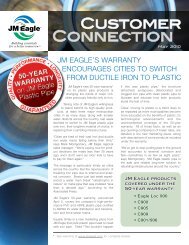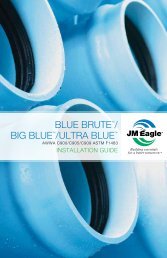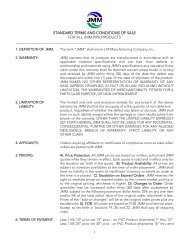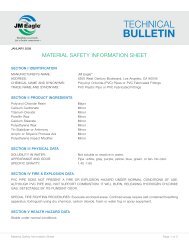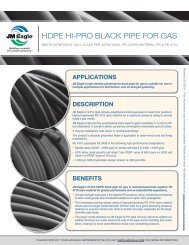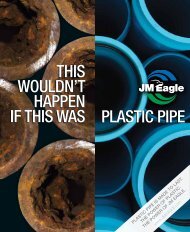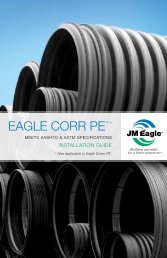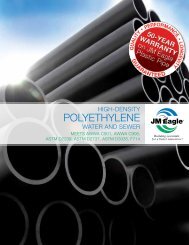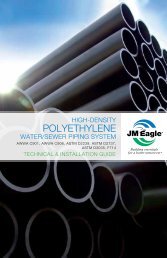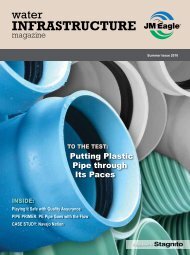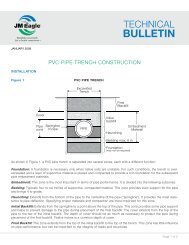I.P.S. Pressure/Irrigation (P.I.P) Installation Guide - JM Eagle
I.P.S. Pressure/Irrigation (P.I.P) Installation Guide - JM Eagle
I.P.S. Pressure/Irrigation (P.I.P) Installation Guide - JM Eagle
Create successful ePaper yourself
Turn your PDF publications into a flip-book with our unique Google optimized e-Paper software.
4.4.2 Mechanical Tampers<br />
Care should be taken to avoid contact between the pipe and compaction<br />
equipment. Compaction of the embedment material should generally<br />
be done in such a way that the compaction equipment is not used directly<br />
above the pipe until sufficient backfill has been placed to ensure that the use<br />
of compaction equipment will not damage the pipe or cause deflection of<br />
the pipe.<br />
When hydro-hammers are used to achieve compaction, they should not be<br />
used within 3 feet of the top of the pipe and then, only if the embedment<br />
material density has been previously compacted to a minimum 85 percent<br />
Proctor density.<br />
4.4.3 Flood or Water Tamping<br />
Flooding or water tamping should be used only in trenches that are excavated<br />
in soils from which water drains quickly and, at the same time, compacts<br />
the haunching material.<br />
If flooding is used, the approved embedment material is first hand placed,<br />
making certain all voids under, around, and along both sides of the pipe and<br />
couplings are filled. Initial embedment material should be placed to a height<br />
sufficient to prevent floating of the pipe.<br />
4.4.4 Water-Jetting<br />
The introduction of water under pressure to the embedment material is not<br />
to be used to compact the embedment material of PVC pipe or any other<br />
flexible conduit.<br />
IRRIGATION & I.P.S. PRESSURE INSTALLATION GUIDE<br />
35



